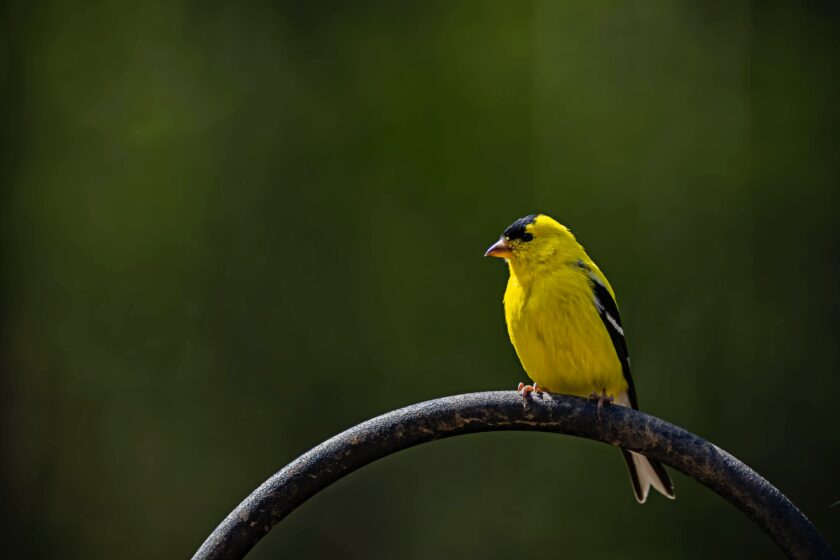The journal, Science, just published an alarming study that there has been a decline of 29 percent, or 3 billion birds in the United States and Canada since 1970.
Experts who have studied bird populations for years were astounded by the new study. David Yarnold, president of the National Audubon Society, said the findings are a “full-blown crisis.†More than 500 species of North American birds, many commonly seen in the skies such as Sparrows and Robins are rapidly shrinking in number.
The principal cause is loss of habitat, particularly forests, grasslands and wetlands. Agriculture converts much of the natural acreage where birds thrive. The World Wildlife Fund reported that 2.5 million acres of wild grasslands in the Great Plains were converted to crop production during just one year between 2015 and 2016. Natural habitat where birds and insects thrive are also lost to development including homes, offices buildings and shopping centers.
More pesticides and reduced natural habitat also mean less insects that birds feed on. That affects a bird’s ability to gain body mass, necessary for long-distance migration. Europe has seen a similar broad and sharp decline in insect species across that continent. A German study found an 82 percent loss in insect biomass over a 27- year period.
The researchers relied upon data gathered since 1970 from amateur bird watchers who count bird populations and species and regularly submit data – to more recent weather radar detection systems – that can count migrating bird populations even at night.
It was not just endangered species, but the more common and abundant birds such as Warblers that saw a decline of 617 million and Blackbirds that lost 440 million. Eastern and Western Meadowlarks lost 139 million, Dark-eyed Juncos declined by 168 million and the sweet-singing White-throated Sparrows were down by 93 million.
In an opinion article in The New York Times about the crises, John W. Fitzpatrick, ornithologist at Cornell and Peter P. Marra from the Smithsonian Migratory Bird Center, wrote, “birds are indicator species, serving as acutely sensitive barometers of environmental heath, and their mass declines signal that the Earth’s biological systems are in trouble.” Unfortunately, the study is just the latest in a long line of such mounting evidence,the magnitude of losses among 300 bird species was much larger than we had expected and alarmingly widespread across the continent.
The National Audubon Society also released a report this week that showed that climate change, especially rising temperatures, threatens drastic changes in the ranges of many North American birds. Increased heat will shrink traditional habitat of these familiar bird species or force them to migrate to cooler regions. The Audubon scientists studied 604 bird species across the North American continent and then considered how varying predictions of temperature rise by the end of the century could affect their habitat and migratory patterns.
They looked at three temperature rise scenarios by 2100 that would depend on the amount of greenhouse gases, in particular, carbon dioxide, are emitted over the following decades into the atmosphere. As recent climate change studies have predicted, including the UN Intergovernmental Panel on Climate Change and the United States Fourth National Climate Assessment, temperatures could rise above pre-industrial levels by 1.5 C, 2.0 C or 3 C by 2100. At 3 C , that’s a staggering 5.4 F increase in average global temperature. Since temperatures do not rise at a uniform rate throughout the globe, many regions could even be hotter.
Of the 604 bird species studied by the Audubon Society, 389 would be vulnerable to 3 C of warming. Questions remain whether a species will be able to migrate or adapt at all or whether they will simply face extinction. Climate change not only affects temperatures that birds are accustomed to in a particular region, but it also affects the amount of rainfall, the number of insects that are available for food, the threat of wildfires and the survival of forests, wetland and grassland habitat.
Benjamin Zuckerberg, an associate professor at the University of Wisconsin in the Department of Forests and Wildlife Ecology, was quoted in The New York Times. He said, we might see bird species shifting their nesting times or changing their diet.
But there is a real concern that the rate of climate change is going beyond the ability of species to adapt, Zuckerberg added.
Some familiar birds, that could disappear from regions where they have always been known include the New Jersey Goldfinch, the Georgia’s songster, the Brown Thrasher and the Minnesota’s state bird, the common Loon whose mournful sound is heard across the state’s northern lakes every summer.
As birds declined across North America, human population has increased. There were an estimated 10 billion birds in 1970 and today, 7.1 billion, a 29 percent decline. The combined human population of Canada and the US was 222,585 million in 1970 and is 359,284,000 today, a 61 percent increase.
As Fitzpatrick and Marra wrote in The New York Times op-ed, what we need most is a societal shift in the values we place on living side-by-side with healthy and functioning natural systems. Natural habitat must not be viewed as an expendable luxury but as a crucial system that fosters human health and supports all life on the planet.
Canaries in coal mines have long been used as early warning signals of toxic gases, especially carbon monoxide. They got sick before the miners who would have time to escape the toxic fumes. If the life sustaining atmosphere on planet Earth becomes toxic or heats to levels that are uninhabitable, to where will birds and humans escape?
